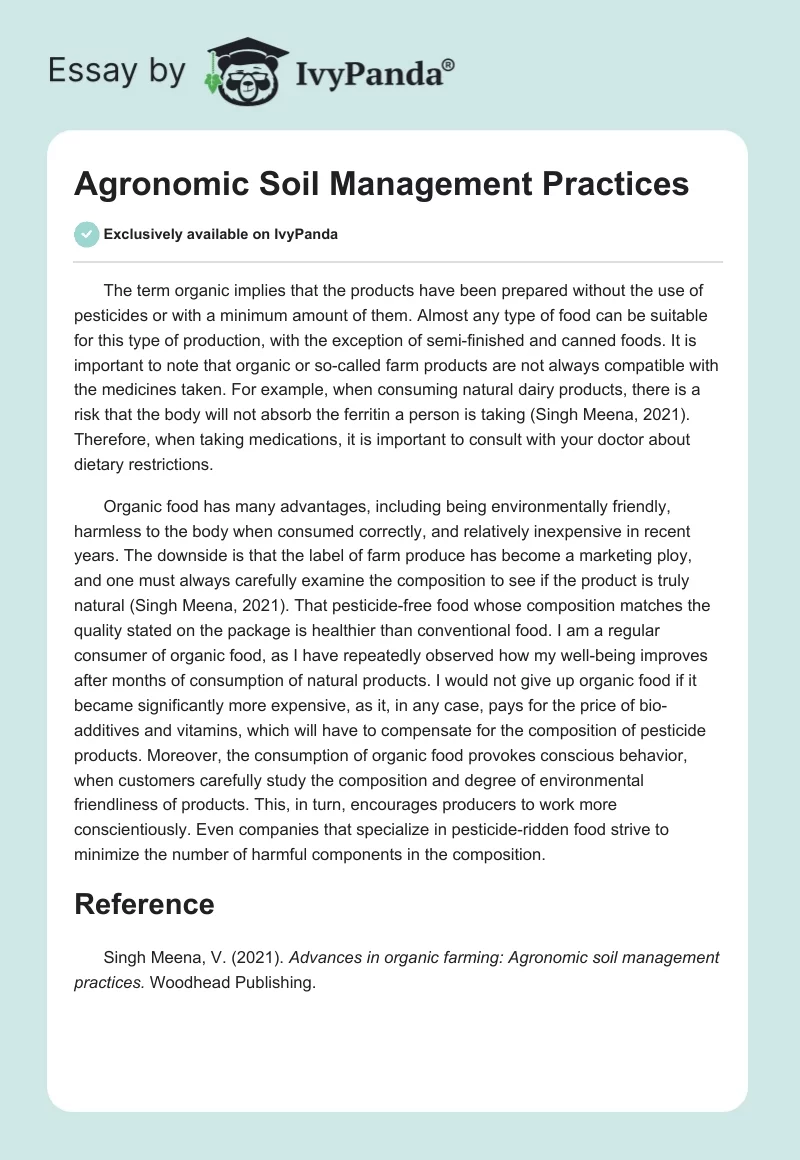The term organic implies that the products have been prepared without the use of pesticides or with a minimum amount of them. Almost any type of food can be suitable for this type of production, with the exception of semi-finished and canned foods. It is important to note that organic or so-called farm products are not always compatible with the medicines taken. For example, when consuming natural dairy products, there is a risk that the body will not absorb the ferritin a person is taking (Singh Meena, 2021). Therefore, when taking medications, it is important to consult with your doctor about dietary restrictions.
Organic food has many advantages, including being environmentally friendly, harmless to the body when consumed correctly, and relatively inexpensive in recent years. The downside is that the label of farm produce has become a marketing ploy, and one must always carefully examine the composition to see if the product is truly natural (Singh Meena, 2021). That pesticide-free food whose composition matches the quality stated on the package is healthier than conventional food. I am a regular consumer of organic food, as I have repeatedly observed how my well-being improves after months of consumption of natural products. I would not give up organic food if it became significantly more expensive, as it, in any case, pays for the price of bio-additives and vitamins, which will have to compensate for the composition of pesticide products. Moreover, the consumption of organic food provokes conscious behavior, when customers carefully study the composition and degree of environmental friendliness of products. This, in turn, encourages producers to work more conscientiously. Even companies that specialize in pesticide-ridden food strive to minimize the number of harmful components in the composition.
Reference
Singh Meena, V. (2021). Advances in organic farming: Agronomic soil management practices. Woodhead Publishing.

